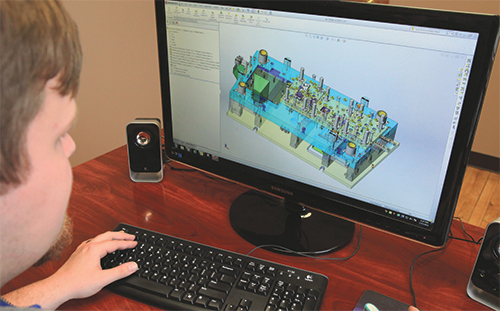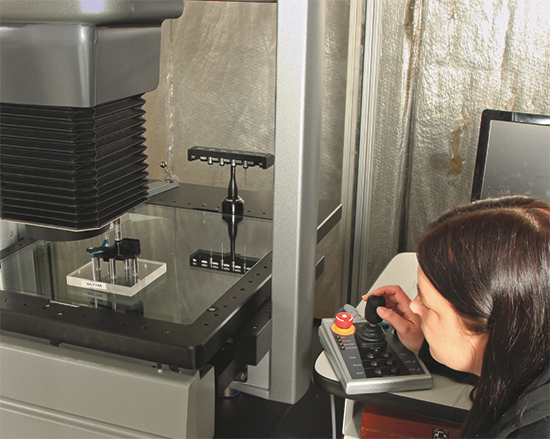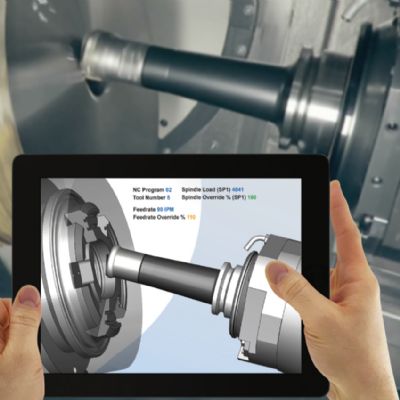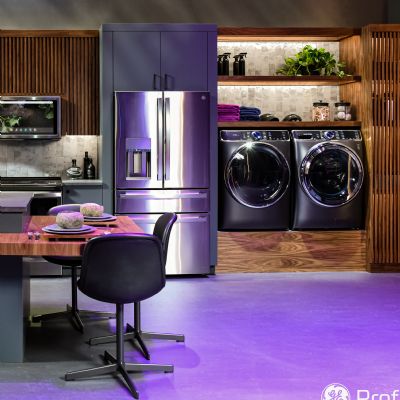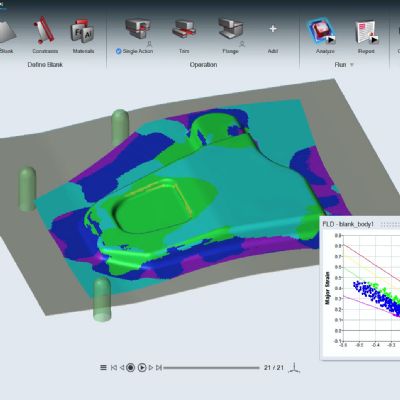The firm employs seven Logopress seats, including one that enables toolmakers on the shop floor to review designs.
Looking Inward as well as Outward
Triggering much of the internal process improvements at Trueline is neither a designer nor a toolmaker. Credit, says Christopherson, goes to applications engineer Mitchell Johnson, “who maintains his focus internally, with the single-minded goal of improving Trueline. While everyone else here stays busy working on projects and maintaining focus on our customers, Mitchell only looks for s to help us work more quickly and efficiently.”
Mitchell assumed the firm’s self-improvement role in 2009, coinciding with its move into injection molding. Among his first (and most significant) process-improvement projects was tying together the firm’s design software to its cam system. “One of the biggest challenges we faced was communicating how to best fabricate specific die details. We asked Mitchell to develop a procedure for including design intent and machining requirements into our designs. Working closely with Logopress, he did just that.”
The result of Mitchell’s collaborative efforts with Logopress is the use of a fifth-place decimal on design records that indicates the process specified to fabricate a detail, “so that the toolmaker knows exactly what’s supposed to happen during die production and assembly,” says Christopherson. The firm’s cam program recognizes the extra decimal in the solid-model program and assigns the appropriate machining processes.
“This minimizes mistakes on the shop floor and further speeds the process,” Christopherson says. “Previously, our bottleneck was delivering a consistent flow of CNC programs to the shop, to keep our machines busy. Now, since machining processes are specified using our design software, that bottleneck has disappeared.”
What’s Mitchell working on now? “We recently acquired a combination coordinate-measuring machine (CMM) and vision system that will allow us to quickly and cost-effectively verify block dimensions,” says Christopherson, “for our internal needs and to streamline the repair work we do on die blocks for outside customers. Mitchell is learning to program the machine offline, using the solid models. We’ll be able to receive feedback in a more timely manner and perform quicker inspections, minimizing lead times.”
Production Lessons Passed to the Toolroom
As most stampers operating fully functional die shops know, much can be learned and applied to die design and build from actually running dies in production stamping operations. Trueline is no exception, and Christopherson shares a few such lessons learned.
“We build a lot of custom cams,” he says, “because we build so many small dies starved for space, and purchased cams often will not fit in our dies. We’re als trying to conserve space in the die to minimize the number of die stations. Based on our experience running the dies, we’ve learned numerous design tricks along the , as well as material-selection tips. The result has been the development of longer-lasting cams for ourselves and for our stamping-shop customers.
“For example,” Christopherson continues, “we’ve incorporated in-die lubrication of cams into several recent projects, to relieve press operators from having to apply grease. We can design and build the cams with an automatic lubrication system, or add an in-die lube station. Then we tie lubricant-level sensing to the press controls.” MFView Glossary of Metalforming Terms
See also: LOGOPRESS
Technologies: Software







